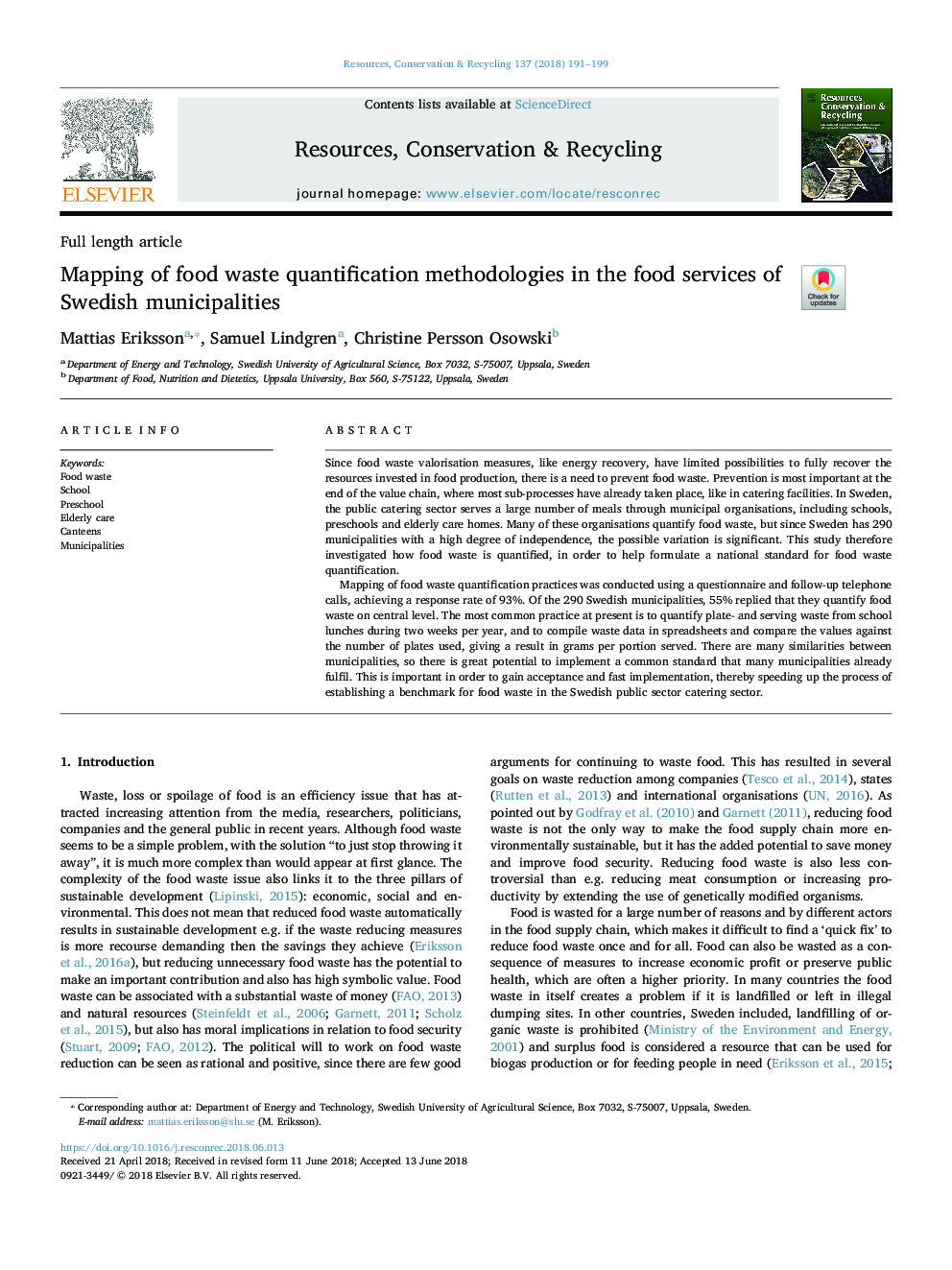| Article ID | Journal | Published Year | Pages | File Type |
|---|---|---|---|---|
| 7493894 | Resources, Conservation and Recycling | 2018 | 9 Pages |
Abstract
Mapping of food waste quantification practices was conducted using a questionnaire and follow-up telephone calls, achieving a response rate of 93%. Of the 290 Swedish municipalities, 55% replied that they quantify food waste on central level. The most common practice at present is to quantify plate- and serving waste from school lunches during two weeks per year, and to compile waste data in spreadsheets and compare the values against the number of plates used, giving a result in grams per portion served. There are many similarities between municipalities, so there is great potential to implement a common standard that many municipalities already fulfil. This is important in order to gain acceptance and fast implementation, thereby speeding up the process of establishing a benchmark for food waste in the Swedish public sector catering sector.
Related Topics
Physical Sciences and Engineering
Energy
Renewable Energy, Sustainability and the Environment
Authors
Mattias Eriksson, Samuel Lindgren, Christine Persson Osowski,
